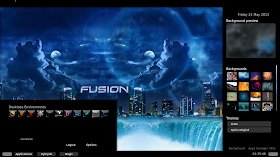Conky-lua is a great and stylish conky that I got from Deviantart. I like its simplicity and appeal. However, conkies doesn't tend to work with modern Gnome 3, Unity and KDE desktops, as it is. Some subtle changes are required to make them work work with these modern desktops. I have made the modifications in the zipped files for
- Debian KDE, GNOME
- Linux Mint KDE, GNOME
- Ubuntu Unity, KDE (Kubuntu), GNOME
- Sabayon KDE, GNOME
- Mageia KDE, GNOME
- Chakra Linux KDE
- OpenSuSE KDE, GNOME
- Fedora KDE, GNOME
You can download the files from my
rapidshare link.






